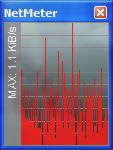1. Remove spywares & viruses :
Viruses & spywares are one of the major & most common reasons of PC slowdown. This is because, they use up the majority of the available memory for their unethical activities. And, the remaining memory is shared by the other programs. Thus, as the programs have to suffice with low memory, slowdown is caused. Therefore, removal of spywares & viruses is the first step towards a speedy PC.
2. Clean & defragment :
In course of time, the PC gets filled up with lots of junk files, gets fragmented & takes a lot of time to carry out simple tasks. Thus, for fixing this problem, you will need to clean & defragment your PC.
i) Cleaning up the junk files is a very easy task these days thanks to free, simple & powerful utilities like
CCleaner &
Advanced SystemCare Free. Using these tools, you simply need to select the junk items to remove, start the cleaning process & within
a couple of minutes, your PC will be clean! You can clean several junk items like temporary Windows files, obsolete registry entries, browser data, etc. using these softwares.
ii) As data moves from one place to another in a PC, it becomes fragmented, as a whole. This also acts as a reason for slowdown. Thus, it is important that you regularly defragment your PC drives for a quick PC. There are several utilities like
Auslogics Disk Defrag,
Smart Defrag, etc. For this purpose. You can occasionally defragment the Windows Registry as well.
You should clean & defragment your PC regularly twice a month to maintain its efficiency & quickness.
3. Disable unnecessary Windows services :
Windows provides a variety of services to us. However, many of these services are not at all useful for most types of users. These services use up extra memory, causing slowdowns for other programs. Thus, disabling some of these services will help in quickening up the PC. The following services can be safely disabled :
ClipBook
Remote Registry
Telnet
NetMeeting Remote Desktop Sharing
Alerter
Error Reporting Service
Messenger
Print Spooler (if you don't use a Printer)
To disable the services, go to Start --> Run --> services.msc. Then, right-click on the concerned service, click on Properties & change the Start-up Type to Disabled.
Decrease the programs on Start-up :
The Startup list is a list of the applications that start along with Windows. Many applications put itself on the Startup list by default. The more the programs on it, more programs will run, which will slow up the PC. So, it is recommended to reduce the number of programs on the Startup list to speed up the PC. You can do so from the Startup tab of the 'Msconfig' utility (Open it from Start --> Run --> msconfig)
[Older PCs] Turn off visual effects :
One of the various features that Microsoft® Windows XP & Vista has over the previous versions is its display effects. For example, the colorful start menu, shadow effects, etc. It definitely adds up to the display value of the OSes. But for slow computers, the effects lead to slower PC performance. Therefore, it is highly recommended to turn off all the visual effects if you are using an older PC.
You can disable the extra effects from Start --> Right-click on My Computer --> Properties --> Advanced --> Settings (1st).
So, good luck in speeding up your PC!

 in the web page. If the page contains RSS feeds, then the RSS logo icon will be usually present in it. You can subscribe to the feed by clicking on the icon.
in the web page. If the page contains RSS feeds, then the RSS logo icon will be usually present in it. You can subscribe to the feed by clicking on the icon. in the web page. If the page contains RSS feeds, then the RSS logo icon will be usually present in it. You can subscribe to the feed by clicking on the icon.
in the web page. If the page contains RSS feeds, then the RSS logo icon will be usually present in it. You can subscribe to the feed by clicking on the icon.










